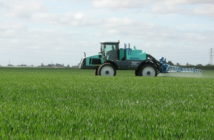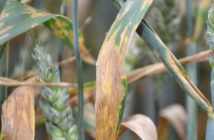Certis’ straight flufenacet herbicides, Sunfire and System 50 have been granted an Extension Authorisation for Minor Use (EAMU) on Rye and Triticale, for the control of black-grass and annual meadow grass.
Already widely used in barley and wheat crops, and showing good control of black-grass and other significant grass weeds, this comes as a welcome addition for growers of Rye and Triticale as another tool in the crop protection armoury.
“In 2015, approximately 17,000 hectares of Triticale and 14,000 hectares of Rye where grown in the UK, and we’re seeing these crops become a popular part of rotations more and more,” explains Chris Charnock, Certis Arable Product Manager.
“Triticale is a versatile crop with the ability to outclass wheat and barley yields in the right situation, and Rye is being grown as an effective break crop by many arable farmers, for use in the AD biogas market.
“However, with them both being part of the same grass family as wheat and barley, Triticeae, they are susceptible to common grass weeds which have the potential risk of hitting yields and the bottom line,” says Mr Charnock.
The EAMU approval states that for use of Sunfire or System 50 on Rye and Triticale crops, the maximum total dose per crop is 0.48L/Ha. Applications must also be made before growth stage 23, and before 31 December in the year of planting.
“As a straight flufenacet herbicide, Sunfire and System 50 offer the advantage of being a flexible option that can be applied with other products, with different modes of action.
“This, combined with a fully integrated pest management strategy, utilising effective cultural grass weed control techniques, means Rye and Triticale growers can achieve the optimal control on-farm, while reducing the risk of herbicide resistance,” says Mr Charnock.



